New American Standard Bible Bundle (NASB) (LBLA) (NBLA)
This bundle includes the following modules:
- New American Standard Bible 1995 Update with Strong’s numbers – NASB
- New American Standard Bible 1977 edition (also available as a separate add-on) – NASB77
- La Biblia de las Americas – LBLA
- Nueve Biblia de las Américas – NBLA
Includes: NASB, NASB 1977, LBLA, NBLA, 17,000 translator’s notes, 93,000 cross-references, NASEC (Exhaustive Hebrew-Aramaic and Greek concordance).
NASB 2020 & NASBHGD 2020
DESCRIPTION
Bundle contents:
- NASB 2020
- NASBHGD-2020
The NASB 2020 is an update of the NASB 1995 that further improves accuracy where possible, modernizes language, and improves readability. These refinements maintain faithful accuracy to the original texts and provide a clear understanding of God’s Word to those who prefer more modern English standards. The long-established translation standard for the NASB remains the same as it always has been, that is to accurately translate the inspired Word of God from the Hebrew, Aramaic, and Greek texts into modern English that is clearly understandable today.
theWord Features
NASB 2020 Bible
- Searchable text (via regular text and Strong’s Numbers)
- Strong’s Numbers
- Words of Jesus in Red
- Headings
- Paragraphs
- Cross references
- Footnotes
- Strong’s Numbers linked to NASBHGD 2020 Dictionary
NASBHGD-2020 Dictionary
- Fully searchable text
- Easy navigation via topics tree display.
- Strong’s Numbers
- Greek Lemmas
- Hebrew Lemmas
- Special Text Colors
- Normal: Text
- Usage: NASB 2020 Usage
- Hyperlink: G10
- Transliteration: Melek
- Hebrew: מֶלֶךְ
- Greek: κοδράντης
Theological Dictionary of the NT: Abridged in One Volume (TDNTa)
This dictionary is a landmark Greek dictionary which has come to us through a lot of people and years of scholarship dedicated to making this scholarly work available. One of the neat features about this work is that it has Strongs numbers, so those who are not proficient in the Greek language can still use the work, working off of the Strong’s Greek Numbers.
Note that there is a foundational work back to Gerhard Kittel, and thus that work is called “Big Kittels” or just “Kittel”, and there is the present work we are offering which is abridged, and called “Little Kittels”. The unabridged Kittel is very large, and has very long and detailed studies on each word, including a lot of linguistics, Greek, German, Latin, Hebrew, etc. It is a very scholarly work, and understood best “by scholars” (very educated scholars at that). Little Kittel though has been edited so as to delete most of that, and leave a simple work that most laymen could understand (and most Bible students with normal Greek abilities, or no Greek abilities at all, in the style of Strong’s Lexicon perhaps).
For actual samples of articles in the dictionary, click on the image at left (a popup viewer should open) and then use the left-right arrow keys on the keyboard, or click on the far left or far right arrows on the image itself.
The samples are:
ábyssos/άβυσσος [abyss]
agathós/αγαθός [good],
ángelos/άγγελος [messenger, angel],
kýrios/κύριος [Lord, lord], -searching dictionary for a word
kýrios/κύριος [Lord, lord], – searching using Strongs Number
mágos/μάγος [magician, Magus],
méli/μέλι [honey]
Greek Bible text of the Novum Testamentum Graece, 28th edition (Nestle Aland) (GNT)
Note: If you came here to purchase NA27. Sorry it is no longer available but if you already own NA27you may get the fixes in theWord > Add Titles.
DESCRIPTION
This is the Greek text, sometimes referred to as the “critical text tradition”. It is the most widely used critical version of the Greek New Testament. It includes:
- letter casing
- accents
- breathing marks
- punctuation
- capitalization
- Old Testament quotes in bold
- paragraphs and poetry formatting
- Tagged with:
- Strong’s codes
- morphology (grammatical parsing)
- word lemmas
Strong’s codes and morphology codes can either be displayed next to each word or be hidden away and appear when the mouse moves over a word. The module can be searched on original words, ignoring accents and breathing marks if desired. Complex searches including Strong’s codes, word grammar and even lemmas are also supported, along with any arbitrary combination of these.
We want to make you aware of some similar products that if you like this work, you might consider getting also.
(1.) Student’s Guide to New Testament Textual Variants, A (“Free to You” from theWord.net)
(2.) Variant Readings of the New Testament (“Free to You” from theWord.net)
(click on the link and you will directly download the module from theWord.net)
Vocabulary of the Greek Testament: Student Edition (VGNTS)
Updated to Version 1.5
Video by Allan Loder on VGNTS
‘Vocabulary of the Greek Testament: Student Edition’ (VGNTS) is an update/revision by Allan Loder of Moulton’s and Milligan’s ‘VGNT’ published 1924-1930. It is based on the 1929 print edition — which is now in the public domain — along with some supplemental material from the 1930 edition. However, this is not merely an electronic reproduction of Moulton’s and Milligan’s book. Rather, it is a major update/revision designed to make this valuable resource more accessible to a wider English-speaking audience — especially those whose knowledge of the Biblical languages is very basic, “rusty,” or non-existent.
Each lexical entry is keyed to Strong’s numbers, has a transliteration and an English gloss.
There are over 937 new entries, not covered in the original print edition
New source materials are added to existing lexical entries, where available and deemed helpful.
There are over 500 cross-references to other related lexical entries within the module
Inline English translations are provided for all Greek text, as well as for most Hebrew, Aramaic, Syriac, Latin, French and German text. A transliteration of some text is also provided, where deemed helpful.
Pertinent information, such as units of measure, currency, names of Egyptian months, official titles, etc., is provided and hyperlinked.
Please note: This resource is protected under derivative copyright law.
An overview of the module from inside theWORD
Englishman’s Greek
Practical Helps in Understanding the New Testament
Based upon a Greek course entitled “Greek Exegetical Methods” taught by Dr. James Boyer
“This excellent study helps a beginner to Greek dive into the Greek New Testament. It is also a helpful review of Greek. This book will bringing you along in your exegetical study of the New Testament by reading Greek, word studies, and more.” – Jonathan Koehn
theWord Features:
- Verse popups
- Fully searchable text
- Easy navigation of topics via topics tree display.
- Special Text Colors
- Normal: Text
- Hyperlink: LXX | Luke 20:21
- Greek: ἑαυτούς
- Chiasmus: A Repent
Codex Sinaiticus
Description:
Created by the Codex Sinaiticus Project
Sponsor The Institute for Textual Scholarship and Electronic Editing University of Birmingham
Funded by the Arts and Humanities Research Council
Transcription D.C. Parker Amy Myshrall T.A.E. Brown with Members of the Institüt für neutestamentliche Textforschung, Münster Transcription,
reconciliation and proofreading Rachel Kevern Conversion to XML and proofreading H.A.G. Houghton Version 1.04, last updated 25.3.2014 The Codex Sinaiticus Project Board 3.11.2010
theWord Features:
- Search the Bible for Nomina sacra such as: Ι̅Υ̅ , Θ̅Ν̅ , θ̅ν̅ or ι̅υ̅
- Use toggle key ‘e’ for main corrector color
This is the main corrector of the Codex Sinaiticus. (Correctors are in Strong’s number color when activated) - Use toggle key ‘y’ for other corrector
The symbol ┬ is used for other correctors of the Codex Sinaiticus. (Other corrector symbol ┬ is in Strong’s number color) - Use toggle key ‘k’ for column mode
The Codex Sinaiticus was written in a column format. We have used the column data that was provided in the transcription to attempt to replicate this. - Use toggle key ‘b’ to make the Greek into Uncials (Uppercase)
This should cause the content to be much closer to the original. The lowercase Greek is easier to read but not as close to the original Codex Sinaiticus. - Use toggle key ‘r’ for removing spaces
The spaces are helpful for reading but are placed based on the opinion of those who provided the transcription among others. The original Codex Sinaiticus did not have spaces. - Use toggle key ‘v’ for symbols
This will toggle the following symbols (symbols are in morphology color)
︴ + Ρ̶ ﹏ ※ ·:· ‾̷‾ ‾̷‾ ‾‾ ˜ s̵ ≀ :· ·:– ωᵨ ωᵨ̲ ( » ONLY for use in margins) - footnote indicators
- pg = page
- c = column
- a = apparatus
- g = graphic
- l = lectionary
- s = section
- t = title
- rt = running title
- red text = rubricated text
(Apocrypha not included at present – if you desire apocrypha content in book form please contact us.)
Legacy Standard Bible with Strong’s Numbers & LSBHGDictionary
DESCRIPTION
Bundle contents:
- LSB
- LSBHGD
Legacy Standard Bible
In the history of English Bible translations, the King James Version is the most well-known. The time-honored version of 1611, itself a revision of the Bishops’ Bible of 1568, became the basis for the English Revised Version, which appeared in 1881 (New Testament) and 1885 (Old Testament). Its American counterpart, a product of both British and American scholarship, was published in 1901. Recognizing the values of the American Standard Version, The Lockman Foundation felt an urgency to preserve the ASV while incorporating recent discoveries of Hebrew and Greek textual sources and rendering it into more current English. This resulted in the New American Standard Bible, a translation based upon the time-honored principles of translation of the ASV and KJV, along with other linguistic tools and biblical scholarship.
The Legacy Standard Bible reflects another iteration of such preservation and refinement. Worked on by a core translation team in conjunction with pastors and educators from different countries, it is designed to honor, maintain, and advance the tradition represented by the NASB.
theWord Features
LSB
- Searchable text (via regular text and Strong’s Numbers)
- Strong’s Numbers
- Words of Jesus in Red
- Headings
- Paragraphs
- Cross references
- Footnotes
- Strong’s Numbers linked to LSBHGD Dictionary
LSBHGD Dictionary
(Dictionary is part of a bundle with the LSB, and cannot be purchased separately.)
- Fully searchable text
- Easy navigation via topics tree display.
- Strong’s Numbers
- Greek Lemmas
- Hebrew Lemmas
- Special Text Colors
- Normal: Text
- Usage: LSB Usage
- Hyperlink: G10
- Transliteration: Melek
- Hebrew: מֶלֶךְ
- Greek: κοδράντης
Robertson’s Grammar of the Greek New Testament in the Light of Historical Research
Archibald Thomas Robertson (November 6, 1863 – September 24, 1934) was a Southern Baptist preacher and biblical scholar whose work focused on the New Testament and Koine Greek.
Robertson was born at Cherbury near Chatham, Virginia. He was educated at Wake Forest (N. C.) College (M. A., 1885) and at the Southern Baptist Theological Seminary (SBTS), Louisville, Kentucky (Th. M., 1888), where he was thereafter instructor and professor of New Testament interpretation, and remained in that post until one day in 1934, when he dismissed his class early and went home and died of a stroke.
Robertson’s books are still consulted today, particularly his Word Pictures in the New Testament and his landmark volume A Grammar of the Greek New Testament in Light of Historical Research. In all, he published 45 books, several of which are still in print today. Robertson helped found the Baptist World Alliance in 1900. He was an important Southern Baptist and a well-respected scholar in his day. Robertson sought to equip his students with the proper tools for good preaching.
(text from Wikipedia.org)
theWord Features:
⦁ Verse popups
⦁ Fully searchable text
⦁ Hebrew, Greek, etc.
⦁ Footnotes
⦁ Pages links
⦁ Easy navigation of topics via topics tree display.
Greek New Testament, (UBS5) 5th revised edition
This is the Greek text, sometimes referred to as the “critical text tradition” (UBS5). It is the most widely used critical version of the Greek New Testament. It includes:
- Passage headings
- Parallel passages
- letter casing
- accents
- breathing marks
- punctuation
- capitalization
- Old Testament quotes in bold
- paragraphs and poetry formatting
- Tagged with:
- Strong’s codes
- morphology (grammatical parsing)
- word lemmas
Upgrade note: Owners of UBS4 may use their UBS4 unlock key as a coupon to receive 50% OFF UBS5.
- If purchased on theWordBooks.com go to https://www.thewordbooks.com/index.php/my-account/downloads/
- If purchased on theWord.net go to https://www.theword.net/index.php?purchase-recoverserial&l=english
Note: If you came here to purchase UBS4. Sorry it is no longer available but if you already own UBS4 you may get the fixes in theWord > Add Titles.
Bible Dictionary of Ancient Greek (BDAG) A Greek-English Lexicon of the New Testament
12.5% off Lowest price possible is $175. (Publisher requirement)
Now includes Strong’s numbers in topic tree! It will now work with your Strong’s number resources NASB, NET2, etc.
Described as an “invaluable reference work” (Classical Philology) and “a tool indispensable for the study of early Christian literature” (Religious Studies Review) in its previous edition, this new updated edition takes Walter Bauer’s Wörterbuch zu den Schriften des Neuen Testaments even further. This work includes Greek definitions for works of all periods of Greek, and has more than 25,000 additional references to classical, intertestamental, Early Christian, and modern literature.
In this edition, Frederick W. Danker’s broad knowledge of Greco-Roman literature, as well as papyri and epigraphs, provides a more panoramic view of the world of Jesus and the New Testament. Danker has also introduced a more consistent mode of reference citation, and has provided a composite list of abbreviations to facilitate easy access to this wealth of information.
Perhaps the single most important lexical innovation of Danker’s edition is its inclusion of extended definitions for Greek terms. For instance, a key meaning of “episkopos” was defined in the second American edition as overseer; Danker defines it as “one who has the responsibility of safeguarding or seeing to it that something is done in the correct way, guardian.” Such extended definitions give a fuller sense of the word in question, which will help avoid both anachronisms and confusion among users of the lexicon who may not be native speakers of English.
Danker’s edition of Bauer’s Wörterbuch is an indispensable tool for New Testament exegete.
theWord Features:
- Verse popups
- Abbreviation popups
- Fully searchable text
- Easy navigation of topics via topics tree display.
- Greek Lemmas
- Strong’s Numbers in topic tree
- Special Text Colors
- Normal: Text
- Hyperlink: New Docs | Hb 9:4
- Greek: σωμάτων
- Hebrew: מִשְׁפָּט
The Complete Word Study Dictionary: Old & New Testament
DESCRIPTION
This is a digital resource for theWord Bible Software.
Pastors, students, laypeople—here’s your key to gaining access to God’s Word in its original languages. The Old Testament volume features Hebrew, Strong’s Numbers, and an English transliteration of each entry, and more. The New Testament text provides each word’s Greek, Strong’s Numbers, an English transliteration, derivation; history and etymology; synonyms and antonyms; and an English word index. (Note: “The Complete Word Study Old Testament Concordance” is not included in theWord edition of this resource.)
Old Testament
theWord Features:
- Dictionary topics
- Strong’s Numbers: H9
- Hebrew: אֲבֵדָה
- Hebrew Transliteration: ’ab̲ēd̲āh
- Verse popups
- Fully searchable text
- Easy navigation of topics via topics tree display.
- Linked to Bible view via Lemma, and Strong’s Numbers
- Special Text Colors
- Normal: Text
- Hyperlink: Gen 9:8
- Strong’s Numbers: H9
- Hebrew: אֲבֵדָה
- Hebrew Transliteration: ’ab̲ēd̲āh
New Testament
theWord Features:
- Dictionary topics
-
- Strong’s Numbers: G25
- Greek: ἀγαπάω
- Greek Transliteration: agapáō
- English: love -ed -edst -er(s) -est -eth -ly
- Derivative(s)
- Synonymn(s)
- Antonym(s)
- Verse popups
- Fully searchable text
- Easy navigation of topics via topics tree display.
- Linked to Bible view via Lemma, and Strong’s Numbers
- Special Text Colors
-
- Normal: Text
- Hyperlink: Mat. 9:8
- Strong’s Numbers: G25
- Greek: ἀγαπάω
- Greek Transliteration: agapáō
Check out Doctor Dave’s Review below.
Theological Dictionary of the New Testament TDNT (10 vols.)
25% off on this product lowest price possible is $150. (Publisher requirement)
Please see the excellent software & book review by DoctorDaveT below.
This monumental reference work, complete in ten volumes, is the authorized and unabridged translation of the famous Theologisches Wörterbuch zum Neuen Testament, known commonly as “Kittel” and considered by many scholars to be the best New Testament Dictionary ever compiled. Mediating between ordinary lexicography and the specific task of exposition, TDNT treats more than 2,300 theologically significant New Testament words, including the more important prepositions and numbers as well as many proper names from the Old Testament. Presenting the words in the order of the Greek alphabet, TDNT typically discusses the following for each word: its secular Greek background, its role in the Old Testament, its use in extra biblical Jewish literature, and its varied uses in the New Testament. Substantial bibliographies and footnotes supplement the articles. It is designed for the intermediate and advanced Greek student. Each significant Greek word of the New Testament is comprehensively presented and takes account of its:
- Greek background
- role in the Old Testament (in the Hebrew and the Septuagint)
- use by Philo, Josephus, and in the rabbinical literature
- uses in the New Testament and its various genres
- appearances (where appropriate) in the Apostolic Fathers
More than 100 distinguished scholars contributed to the work, including specialists in Old Testament, Septuagint, Hellenistic, Semitic and Rabbinic studies. Extensive bibliographies and detailed footnoting supplement the articles.
Overview of the resource inside theWord
theWord Features:
- Verse popups
- Abbreviation popups
- Fully searchable text
- Easy navigation of topics via topics tree display.
- Greek Lemmas
- Strong’s Numbers in topic tree
- Special Text Colors
- Normal: Text
- Hyperlink: Grundmann | 2 Tm. 3:1 ff. | 1 | †
- Volume & Page Number: v1 p162
- Latin: supra
- Transliteration: qādēs̆: ṭāhēr
- Greek: σωμάτων
- Hebrew: מִשְׁפָּט
Note: This is the unabridged version which is 10 volumes in print.
About the Author
An Interpretive Lexicon of New Testament Greek (Analysis of Prepositions, Adverbs, Particles, Relative Pronouns and Conjunctions)
Book Summary
This interpretive lexicon is a Greek language resource that is intended to help students and translators to easily and quickly determine the range of translation possibilities for a wide variety of the smallest and most difficult words in the Greek New Testament to translate
About the Book
Save considerable time in translating and exegesis of the Greek New Testament text.
This Lexicon has a very specific and important purpose: to make the process of New Testament interpretation easier and more accurate by providing a comprehensive yet concise interpretation of Greek words that determine logical relationships between statements or clauses.
These words (prepositions, adverbs, particles, relative pronouns, conjunctions and other connectors) are essential to revealing and supporting the main ideas in the text and are especially useful for interpreting logical arguments, such as those found in the epistles.
While not exhaustive, this Interpretive Lexicon lists the vast majority of Greek connecting words, especially those that are notorious for being some of the most difficult words to translate.
Features include:
- Concise definitions for quick analysis.
- Examples of where the word is found in Scripture.
- Page references to several major lexical resources for further translation options and nuances.
- Interpretation of the broader categories of each word (for example: locative (in, among, on), means-end (with, by), grounds (because, on account of), temporal (while, at), and so on.
The interpretive feature of the book–evaluating the word’s function in discourse–is tremendously helpful for the exegetical process, allowing the translator to closely follow the logical flow of the text with greater efficiency. This Interpretive Lexicon is a valuable handbook for student, pastor, and scholar alike.
theWord Features:
- Verse popups
- Abbreviation popups
- Many internal links
- Word lookup via right-click-menu
- Fully searchable text
- Footnotes
- Page numbers noted for BDAG (00 and 79)
- Easy navigation of topics via topics tree display.
- Special Text Colors
- Normal: Text
- Hyperlink: Luke 20:21
- Greek: χρησις
- Hebrew: א
- Page Number: [pg21>
Beginning with New Testament Greek
If you are a student who has been assigned this textbook, it is our prayer that it will help instill in you a passion for reading the Greek New Testament. After all, what is more exciting than reading the very words that God inspired? Our advice to you at this point is to follow carefully your instructor’s advice. If you are using this book for self-study, start each chapter by watching its brief overview video via the web links provided. After that, read the chapter, study the material, and test your mastery by doing the practice exercises at the end of the chapter. Answers to the exercises are found at the back of the book. Additional free materials are available for you at beginninggreek.com.
We wish we could also provide you with dozens of inspiring quotes or stories, advice on study habits, and many effective memory techniques. In fact, we do provide such a “personal trainer in paperback” for your Greek journey in our volume, Greek for Life: Strategies for Learning, Retaining, and Reviving New Testament Greek (Baker, 2017). We encourage you to read that volume along with this one.
Here we turn to address a broader audience—especially the professors who might adopt this textbook for classroom use. “There is no end to the making of many books” (Eccl 12:12). The biblical sage’s observation is especially true of New Testament Greek grammars penned in English. More than 100 introductory Greek grammars have been published in the last century. Why one more?
- Advances in technology now enable the production of a textbook seamlessly integrated with other pedagogical resources, greatly improving student learning. (Note the web links throughout the book whereby students can immediately watch mini-lectures and listen to Greek vocabulary pronounced.) We recommend that you immediately check out beginninggreek.comto see many other free resources prepared for both students (vocabulary flashcards, PDFs of PowerPoint files, links to videos and other resources, etc.) and professors (tests, quizzes, PowerPoint files, syllabi, etc.).
- Beginning Greek students need to be informed accurately and engagingly of the growing consensus among Greek scholars on verbal aspect, discourse functions of tenses, and middle voice/deponency. Recent decades of linguistic analysis have helped Greek scholarship to speak more precisely and objectively about patterns that the best Greek grammarians have observed for centuries. We are hopeful that students who use our textbook will never wander through the wasteland of confusion over these topics.
- Though most beginning grammars do not discuss text criticism, commentaries, critical editions of the Greek New Testament, diagramming, Greek word studies, or digital resources, we have included a brief introductory essay for each one of these topics. A professor may choose to cover all, part, or none of these matters in the classroom, but students will have been provided with accurate, up-to-date information on critical matters—with recommendations of additional resources to explore the topics further.
- The vocabulary lists at the end of each chapter provide working vocabulary for the followingchapters. This simple and innovative tweak to the traditional method of learning Greek vocabulary enables students to focus on new grammatical concepts without the distraction of learning many new words at the same time.
- Without sacrificing accuracy or essential detail, this textbook streamlines and consolidates essential Greek grammar into 24 chapters—giving professors maximum flexibility in choosing to cover the material in one or two semesters.
Though not original to our grammar, we also think the following features help increase its pedagogical effectiveness:
- Each chapter begins with a “significance” section—looking at specific text from the Greek New Testament that illustrates the meaning payoff of the new grammatical category that is being introduced.
- Chapters contain multiple practice exercises that isolate specific new skills before applying them to translation sentences.
- All translation sentences come directly from the Greek New Testament—a great encouragement to students who are learning Greek in order to read the Bible more faithfully. If you find the exercises at the end of the chapter are taking your students too long, feel free to assign only a percentage of them.
- An answer key is provided in the back of the book, allowing students to check their work immediately.
We love seeing students ablaze with a passion to read, understand, believe, obey, enjoy, and teach the Greek New Testament. It is our prayer and hope that this textbook aids in igniting that fire in many hearts.
theWord Features
- Verse popups
- Fully searchable text
- Footnotes
- Pages links
- Easy navigation of topics via topics tree display.
- Glossary of terms
- Name Index
- Subject Index
- Scripture Index
- Special Text Colors
- Normal: Text
- Hyperlink: LXX| Luke 20:21
- Page Number: [p21>
- Greek: Καλλίμαχος
A Primer of Biblical Greek
Download student resources
Request instructor resources
Though there are currently a number of texts for teaching biblical Greek, most of them are plagued by various deficiencies. Written with these flaws in mind, this new primer by N. Clayton Croy offers an effective, single-volume introduction to biblical Greek that has proven successful in classrooms around the country.
This volume takes a primarily deductive approach to teaching biblical Greek and assumes that students have no prior knowledge of the language. Divided into 32 separate lessons, each containing a generous number of exercises, the text leads students from the Greek alphabet to a working understanding of the language of the Septuagint and the New Testament.
Special features of A Primer of Biblical Greek:
- An abundance of exercises Each lesson includes practice sentences taken from the Septuagint and the New Testament as well as Greek sentences composed by the author. Exercises in English-to-Greek translation are also included.
- Concise but accurate grammatical explanations Great care has been taken to insure that grammatical explanations are clear, correct, and succinct. In particular, the Greek participle receives a fuller-than-usual treatment.
- A natural order of presentation Material is presented according to the natural structure of Greek and the traditional terminology of grammarians. Declensions and principal parts, for example, are presented in numerical order.
- Inclusive language The book uses inclusive language for human beings throughout.
- Helpful appendixes for quick reference Included at the back of the book are the Greek paradigms, Greek-to-English vocabulary, English-to-Greek vocabulary, and a bibliography for further study.
theWord Features
- Verse popups
- Terms explained popups
- Footnote popups
- Fully searchable text
- Easy navigation via topics tree display.
- Greek Lemmas
- Special Text Colors
- Normal: Text
- Hyperlink: LXX| Luke 20:21
- Page Number: [pg 21>
- Latin: septuaginta
- Transliteration: Gamma
- Greek: Καλλίμαχος
Message/Bible Study Preparation Guide
- Do you feel like you need better structure when putting together a Bible study?
- Do you want to make sure you’re getting as much as possible from your message preparation?
- Or maybe you need a fresh perspective on your study of the Bible.
- Have you wanted to do a Word Study in Hebrew, Greek, English or Strong’s but didn’t know where to start?
Product Highlights:
- Usable with theWord, or Physical book resources.
- Practical and tailored to Biblical Hebrew Studies, Biblical Greek Studies or to English/Strong’s Studies.
- 104 pages in print.
“Koehn uses the word “Guide” in his title. Good choice! As I was preparing the review, I kept thinking “field manual,” like a bird watcher might use; perhaps lacking in some detail, but quickly pointing out “what it is” and “what it isn’t.” The text is less academic, and more practical, than a typical “hermeneutics” or “homiletics” book.” by Dr. Dave Thomason — See full Review by Dr. Dave Thomason below!
theWord Features:
- Verse popups
- Fully searchable text
- Easy navigation of topics via topics tree display.
- Special Text Colors
- Normal: Text
- Hyperlink: Gen. 9:8
- Strong’s Numbers: H3034
- Greek: πλάνος
- Hebrew: אֱלֹהִ֑ים

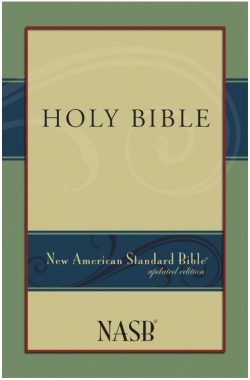
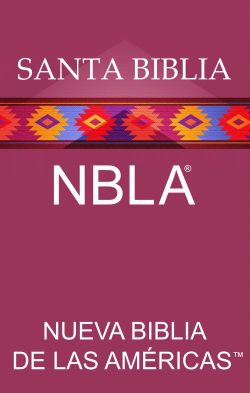
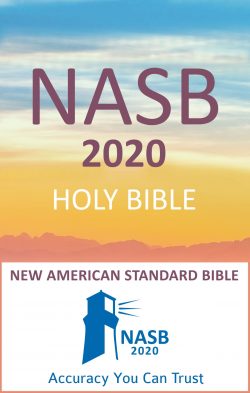
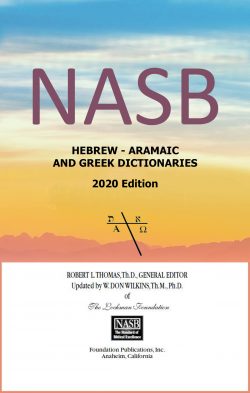
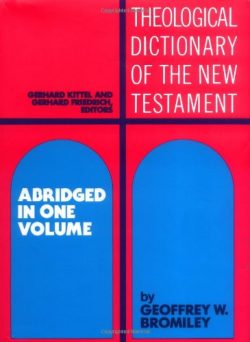
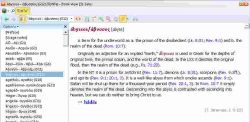
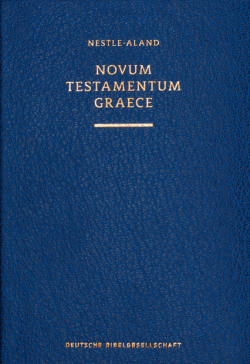
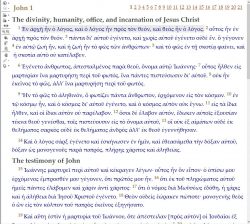
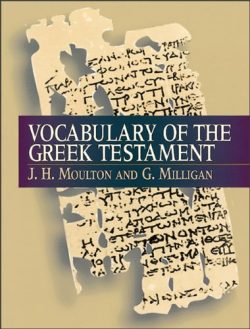
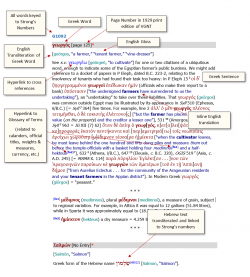
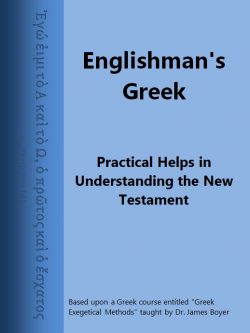
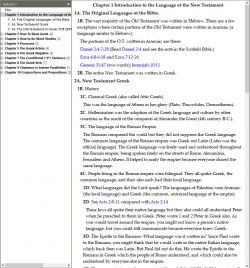
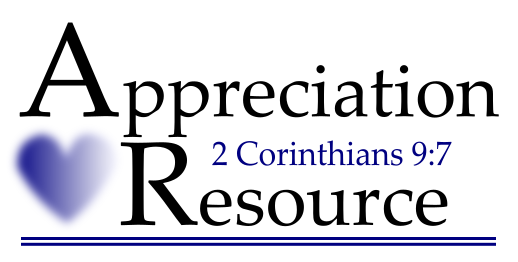
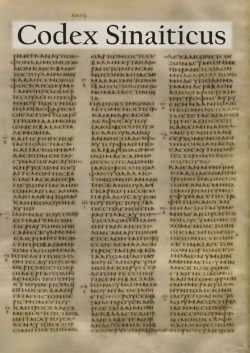
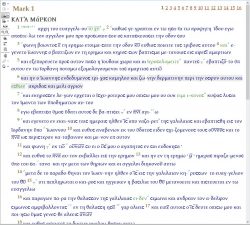

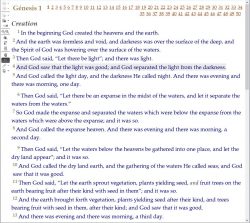
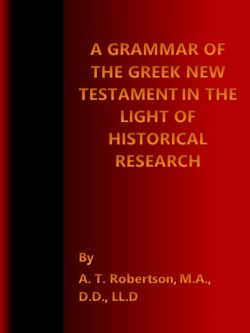
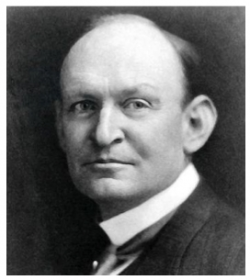
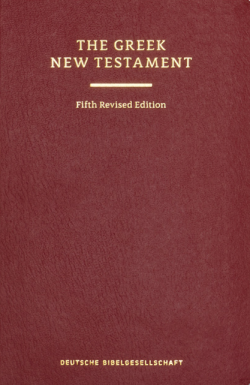
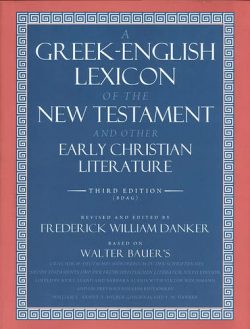


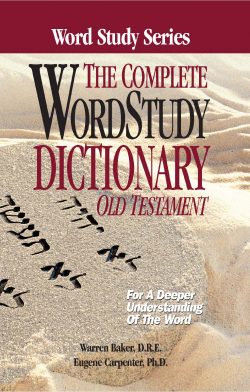
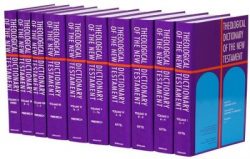
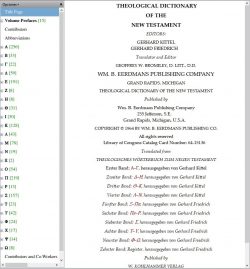
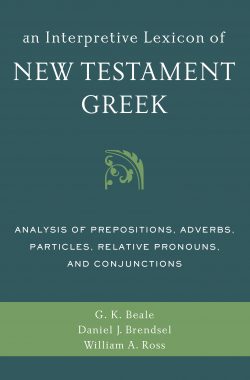

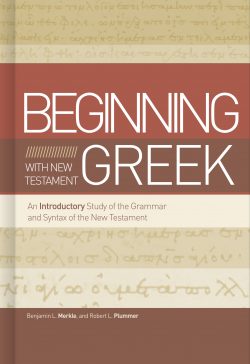
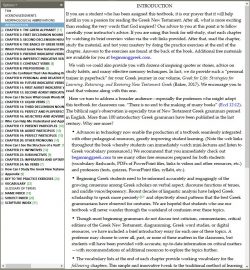
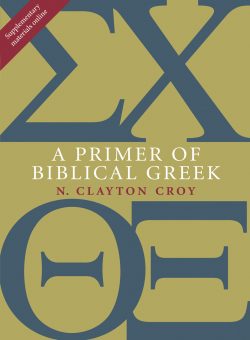
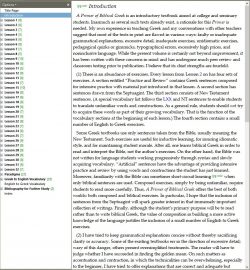
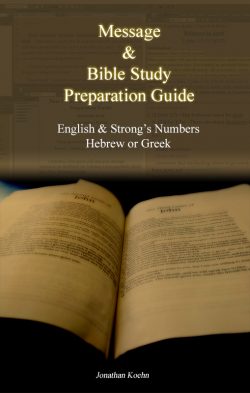
New Testament Text and Translation Commentary
The purpose of this work is to provide scholars, pastors, students, and serious Bible readers with a commentary on the variant readings in the New Testament that have significance for Bible interpretation and Bible translation—and to do so in a format that is communicative and informative to English readers as well as those who know Greek.
theWord Features